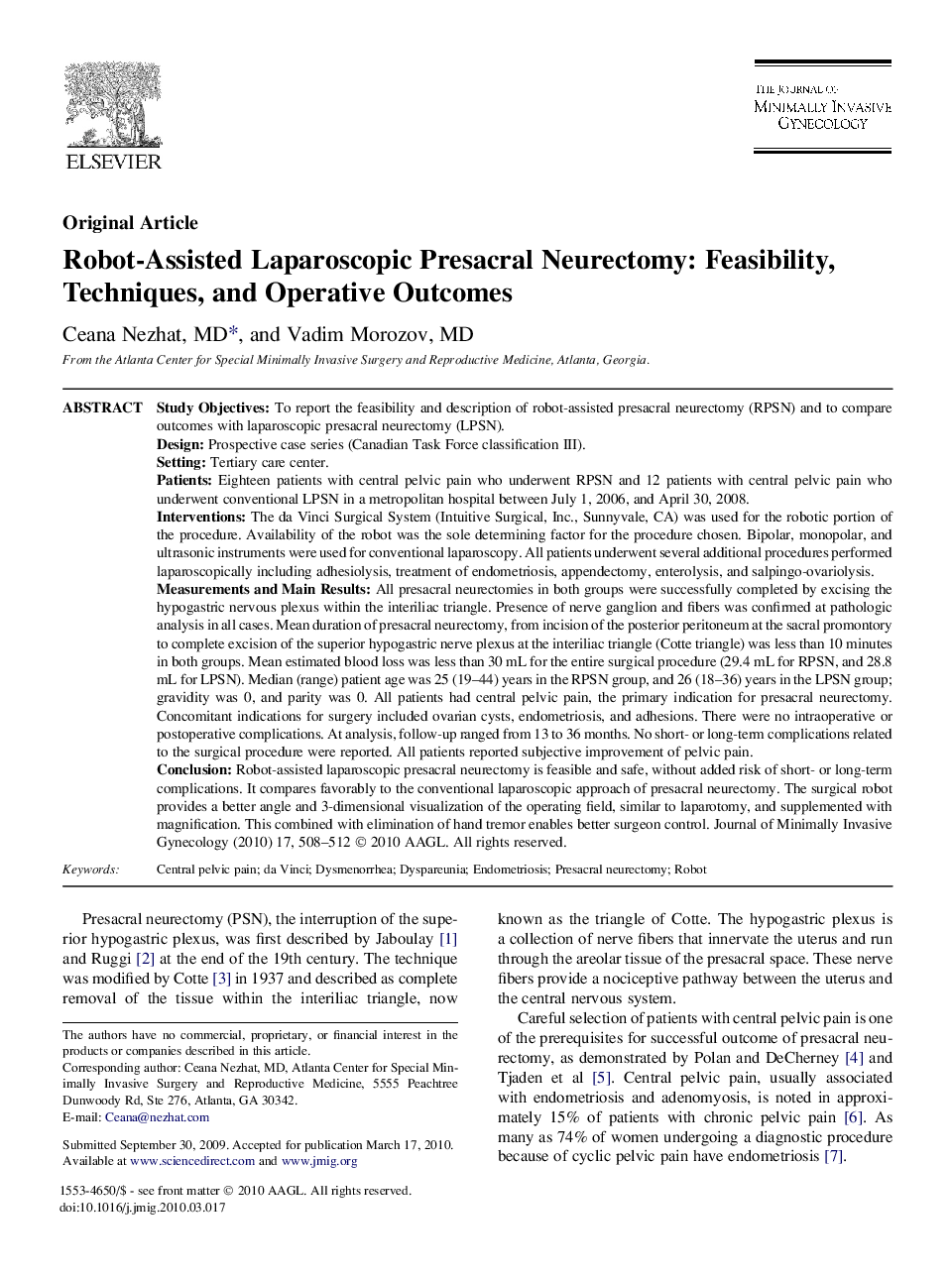| کد مقاله | کد نشریه | سال انتشار | مقاله انگلیسی | نسخه تمام متن |
|---|---|---|---|---|
| 3956812 | 1255336 | 2010 | 5 صفحه PDF | دانلود رایگان |

Study ObjectivesTo report the feasibility and description of robot-assisted presacral neurectomy (RPSN) and to compare outcomes with laparoscopic presacral neurectomy (LPSN).DesignProspective case series (Canadian Task Force classification III).SettingTertiary care center.PatientsEighteen patients with central pelvic pain who underwent RPSN and 12 patients with central pelvic pain who underwent conventional LPSN in a metropolitan hospital between July 1, 2006, and April 30, 2008.InterventionsThe da Vinci Surgical System (Intuitive Surgical, Inc., Sunnyvale, CA) was used for the robotic portion of the procedure. Availability of the robot was the sole determining factor for the procedure chosen. Bipolar, monopolar, and ultrasonic instruments were used for conventional laparoscopy. All patients underwent several additional procedures performed laparoscopically including adhesiolysis, treatment of endometriosis, appendectomy, enterolysis, and salpingo-ovariolysis.Measurements and Main ResultsAll presacral neurectomies in both groups were successfully completed by excising the hypogastric nervous plexus within the interiliac triangle. Presence of nerve ganglion and fibers was confirmed at pathologic analysis in all cases. Mean duration of presacral neurectomy, from incision of the posterior peritoneum at the sacral promontory to complete excision of the superior hypogastric nerve plexus at the interiliac triangle (Cotte triangle) was less than 10 minutes in both groups. Mean estimated blood loss was less than 30 mL for the entire surgical procedure (29.4 mL for RPSN, and 28.8 mL for LPSN). Median (range) patient age was 25 (19–44) years in the RPSN group, and 26 (18–36) years in the LPSN group; gravidity was 0, and parity was 0. All patients had central pelvic pain, the primary indication for presacral neurectomy. Concomitant indications for surgery included ovarian cysts, endometriosis, and adhesions. There were no intraoperative or postoperative complications. At analysis, follow-up ranged from 13 to 36 months. No short- or long-term complications related to the surgical procedure were reported. All patients reported subjective improvement of pelvic pain.ConclusionRobot-assisted laparoscopic presacral neurectomy is feasible and safe, without added risk of short- or long-term complications. It compares favorably to the conventional laparoscopic approach of presacral neurectomy. The surgical robot provides a better angle and 3-dimensional visualization of the operating field, similar to laparotomy, and supplemented with magnification. This combined with elimination of hand tremor enables better surgeon control.
Journal: Journal of Minimally Invasive Gynecology - Volume 17, Issue 4, July 2010, Pages 508–512